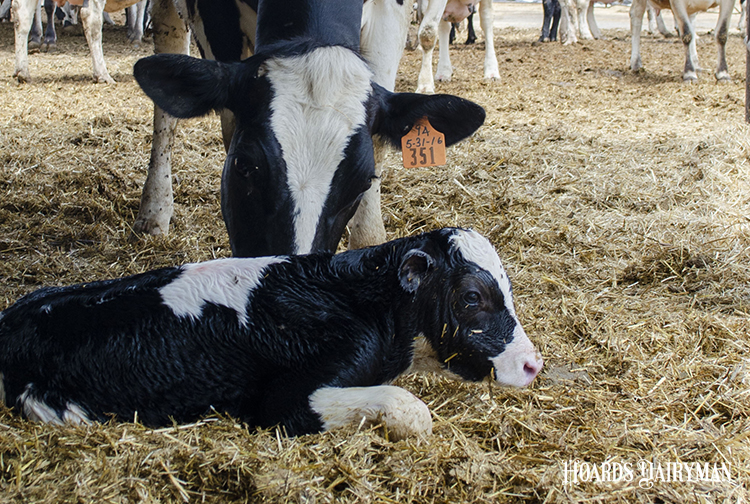
As we brace ourselves and our farms for winter, there is one particularly vulnerable population on the dairy when it comes to cold weather.
“Newborns are going to be the most susceptible animals to cold on the farm,” said Sarah Morrison during the December Hoard’s Dairyman webinar. Morrison, a research scientist at the William H. Miner Agricultural Research Institute, shared a few reasons why calves are impacted by cold stress.
For starters, a newborn calf has just 2% of its body weight as brown adipose, the fat that helps with nonshivering thermoregulation. Because they don’t have as much fat or as much hair, Morrison said they have relatively poor insulation. “It is harder for them to maintain body temperature,” she noted.
Additionally, a wet newborn calf is going to have a more difficult time staying warm. Using thermal images, Morrison showed that on a wet calf, the ears, nose, legs, and umbilical cord could be relatively cooler than the calf’s core body temperature because it is exchanging body heat with the environmental conditions. Meanwhile, a dry hair coat facilitates a calf’s ability to maintain body temperature.
Morrison said newborns from cows that had a difficult calving are more prone to heat loss due to impaired heat generating mechanisms. She noted that thermogenesis can be 36% less in these calves compared to calves born normally. Morrison emphasized that calves born to cows with dystocia may require extra attention after birth.
To help calves get off to a good start, Morrison said to minimize the time between when a calf is born and when it is dry. Calves born in cold take longer to stand, are slower to drink colostrum, and have greater loss of body heat when hair is wet. “You want to get that hair dry and warm, as this doubles the coat depth and helps provide extra protection,” she explained.
Colostrum can help with heat production, Morrison noted. “We talk about getting colostrum into calves from an immunoglobulin standpoint, but that colostrum has fat and protein, which help jumpstart a calf’s metabolic capacity so they will start to increase their heat production potential,” she shared.
To learn more on this topic, listen to the December Hoard’s Dairyman webinar, “Caring for calves in cold weather,” available at on.hoards.com/WB_121321. This webinar was sponsored by Agri-Plastics.








